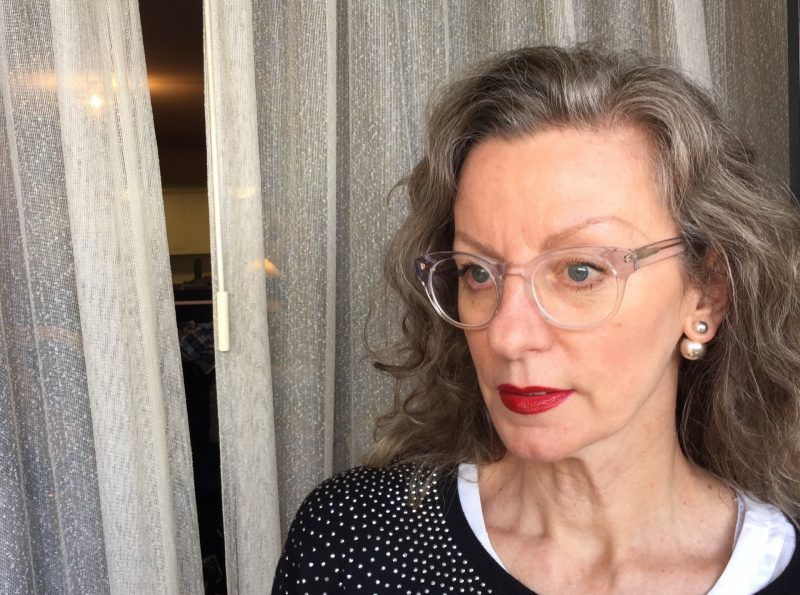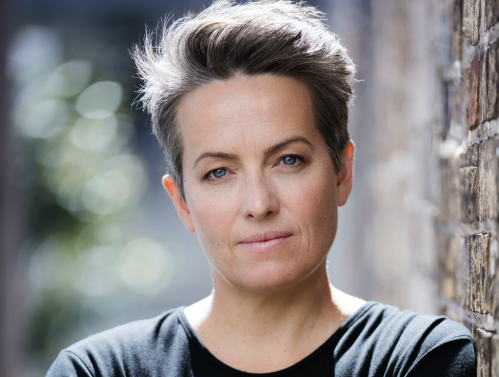
WHY do some older women struggle with the idea of going grey gracefully when young women today are choosing to?
Young women colouring their hair grey or silver is all the rage on social media, particularly Instagram. Who knew going grey could be so chic.
If you’ve been colouring your hair to disguise the greys the thought of stopping can be scary. But going grey is not just a decision; it’s also a process.
Going grey — when follicles stop producing melanin — is determined by DNA. Even the speed at which certain sections go grey (temples first for some, the crown area for others) and the colour you get (white or salt ‘n’ pepper) are also genetically predetermined.
I love the idea of going grey. As a child I was white blonde, but now more of a mousy or “dirty” blonde, I’ve lightened my hair for years. But a couple of years ago, the grey hairs started appearing along my natural part and right temple.
Both my grandmothers went white and my 80-year-old mother, who was a brunette and more salt ‘n’ pepper, is now going white. Genetically speaking I, too, will go white. So I’ve decided to embrace the grey. Simple, right? In practise, no.
I recently caught up with hairdresser Jules Peacocke from Lily Jackson Hair + Makeup (below) — who sports a wonderful salt ‘n’ pepper grey — for a chat about how to go grey gracefully.
What are the issues faced by women going grey?
The biggest issue for most women is how to transition to grey AND keep your hair looking great.
No two people go grey in the same way, so “going grey” requires a bespoke solution. The colour of our skin changes with age (as does our hair), so this needs to be considered.
Often, one solution might have been to cover the grey hair with an overall tint or highlights. But growing out colour presents its own challenges and requires a well thought-out strategy depending on how patient the client is about the transition. It is a gradual process and, for many women, it’s a really big step.
The other issue is that we assume grey is uniform in appearance. But it is not.
Grey hair has unusual colour tones, which need to be corrected. It also has different densities in different parts of your head and different textures. (For example, you might be a really light grey in the front and still have your original pigment at the back. And curly grey hair is often more wiry than natural hair and can be more difficult to control.)
How does one go grey gracefully?
Limitations in professional hair colour in the past often meant that stylists weren’t able to create grey shades and tones. But now there are many more tools, products and interesting colour technology that enables us to create bespoke levels of fashion-oriented grey hair.
What does this mean?
The best news is you don’t have to have a really obvious regrowth or look aged and unkempt in the process.
First, consider is how much colour already exists in the hair, and the difference between the coloured hair and the original (natural) pigment. Some clients might want a slow transition — growing out the grey and blending through bespoke colour so that the hair doesn’t look flat or unattractive.
However, others are super ready — so a full removal of the colour in the hair is right for them. The success depends on the overall health and condition, and length of the hair being treated (shorter styles are better). But grey hair still requires a bespoke approach to looking good. Finding a stylist who can take you on this journey and make it enjoyable — and not a stressful — experience is key.
Some of the techniques we use at Lily Jackson Hair + Makeup include:
- Toning down undesirable colours
- Creating contrast by adding highlight or lowlights
- Putting in MORE grey (Some people have white hair so we often add in grey or blonde tones to create more depth and texture.)
Is cutting hair really short and letting it grow again the ONLY way?
No, for the reasons mentioned above.
For those who don’t want to sacrifice long hair what would you suggest?
Long hair is that it must be healthy. Unfortunately, women attached to long hair often ignore their split or dead ends. For any hairstyle to remain healthy, look good and colour to hold, split ends must be removed. Again, a bespoke approach to colour is needed. Transitioning to grey means allowing some natural colour to show through over a period of time.
However, grey hair looks best with a strong, sharp style.
Can you reverse colour?
We can remove (or strip) colour from the hair leaving it with no colour. Then we deposit the desired colour (this can be a bespoke grey colour) back into the hair.
The colour removal process is not suitable for everyone and definitely not to be attempted if you’ve been colouring your hair with supermarket or consumer brand colour.
And, finally, will a woman’s professional goals be compromised by going grey?
Many women in high-powered positions would not consider going grey because they feel they would be judged and be open to bias and prejudice. But it all comes down to confidence in yourself and your hairdresser or stylist.
MORE: Lily Jackson Hair + Makeup


